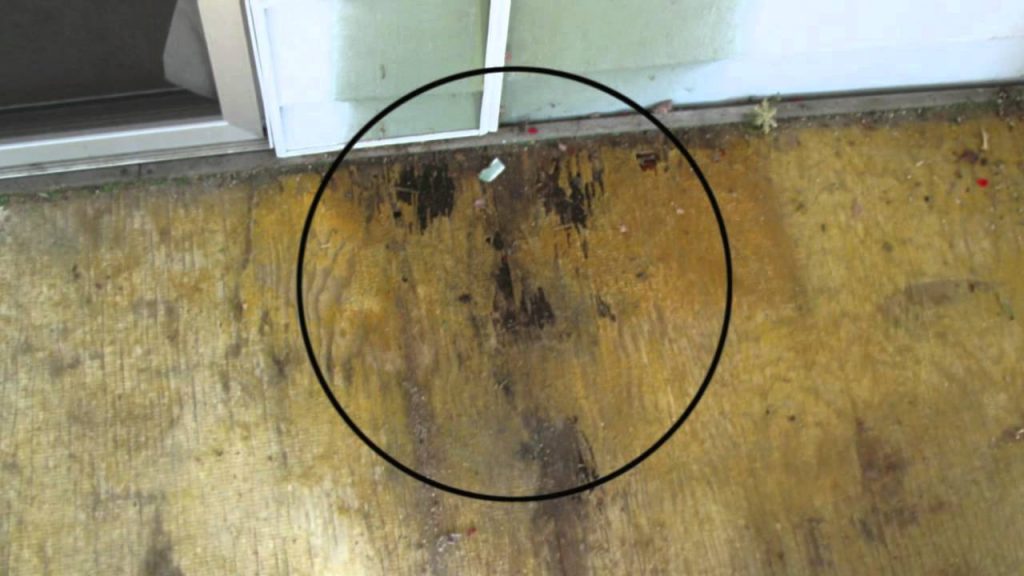Termites are a common problem in many parts of the world, and they are a serious threat to your home and property. But do termites actually eat plywood? In this article, we explore the potential danger that termites pose to plywood and other wood products in your home. We’ll look at the types of termites that may be attracted to plywood, as well as the best ways to protect your home from a termite infestation.
Types of Plywood
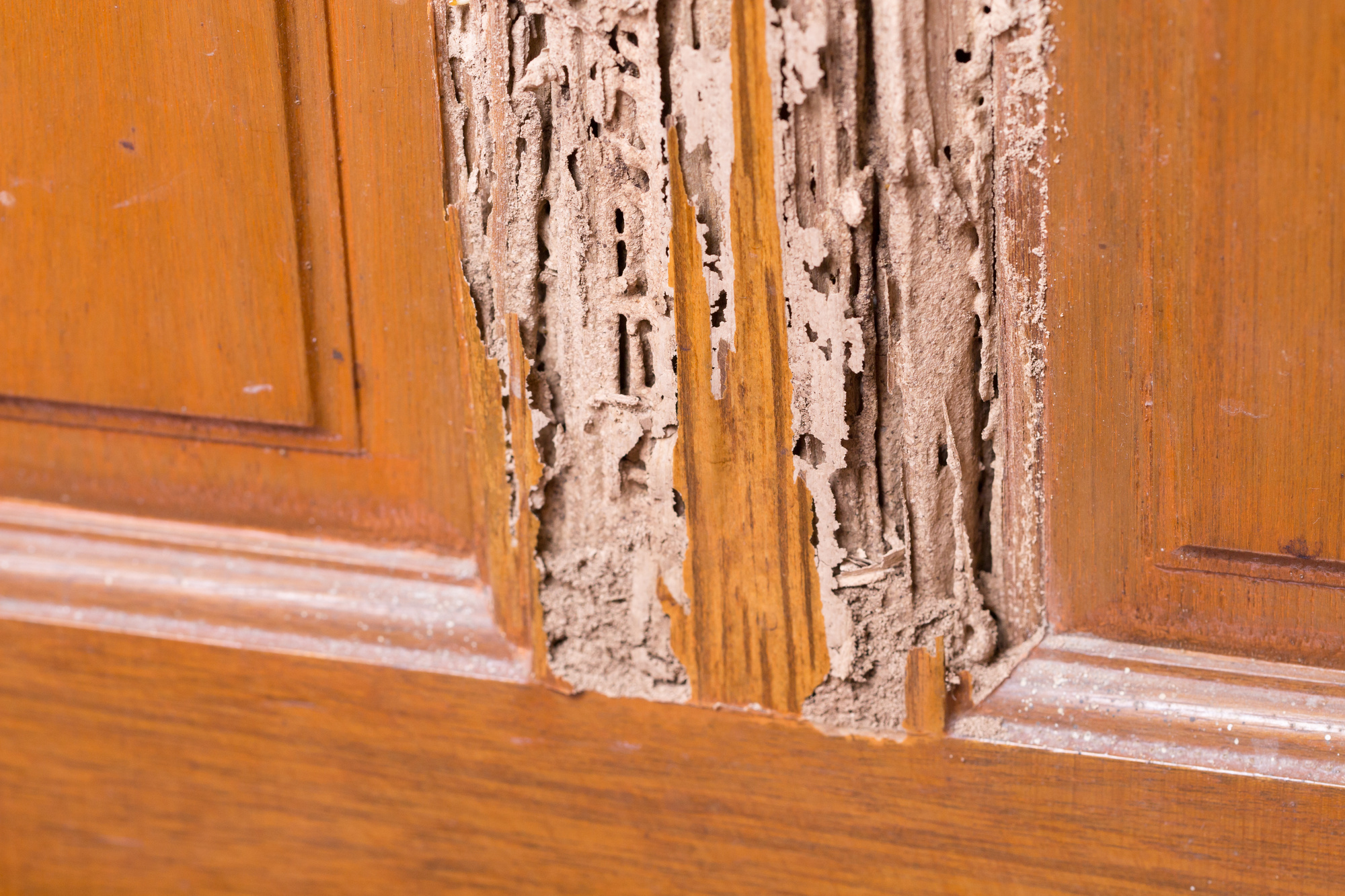
| Plywood Type | Typical Uses |
|---|---|
| Softwood Plywood | Structural subflooring, wall and roof sheathing, furniture, cabinetry, shelving |
| Hardwood Plywood | Furniture, cabinetry, shelving, toys, interior trim, flooring underlayment |
| Exterior Plywood | Outdoor structures, siding, decks, sheathing, roofing, marine applications |
| Particleboard | Cabinetry, furniture, shelving, wall paneling, interior trim, underlayment |
| MDF | Cabinetry, furniture, shelving, wall paneling, interior trim, underlayment |
| OSB | Structural wall and roof sheathing, subflooring, exterior siding, fencing |
Plywood is an engineered wood product made up of several thin layers of wood, known as plies. The plies are glued together in alternating, perpendicular directions to create a cross-graining pattern. This pattern results in increased strength and stability that resists shrinkage and expansion. Plywood comes in several different types, each designed for specific purposes.
Softwood plywood is made from cedar, pine, or spruce, and is generally used for construction and industrial purposes. Softwood plywood is the most common and economical type of plywood. It is typically used for subflooring, wall and roof sheathing, and as a support for siding and other finishes. It is also commonly used to create furniture, cabinetry, and shelving.
Hardwood plywood is made from hardwood species such as maple, oak, or mahogany. It is used for more decorative purposes, such as furniture, cabinetry, shelving, toys, and interior trim. It is also used as an underlayment for flooring.
Exterior plywood is made with waterproof glue and is designed for outdoor applications, such as outdoor structures, siding, decks, and roofing. Marine plywood is a type of exterior plywood that is designed to resist rotting in high-moisture environments.
Particleboard and medium density fiberboard (MDF) are both made from wood chips, sawdust, and other wood waste that is glued together and pressed into sheets. Particleboard and MDF are used for cabinetry, furniture, shelving, wall paneling, interior trim, and underlayment.
Oriented strand board (OSB) is made from wood chips, sawdust, and other wood waste that is arranged in layers and glued together. OSB is used for structural wall and roof sheathing, subflooring, and exterior siding and fencing.
Are Termites Attracted to Plywood?
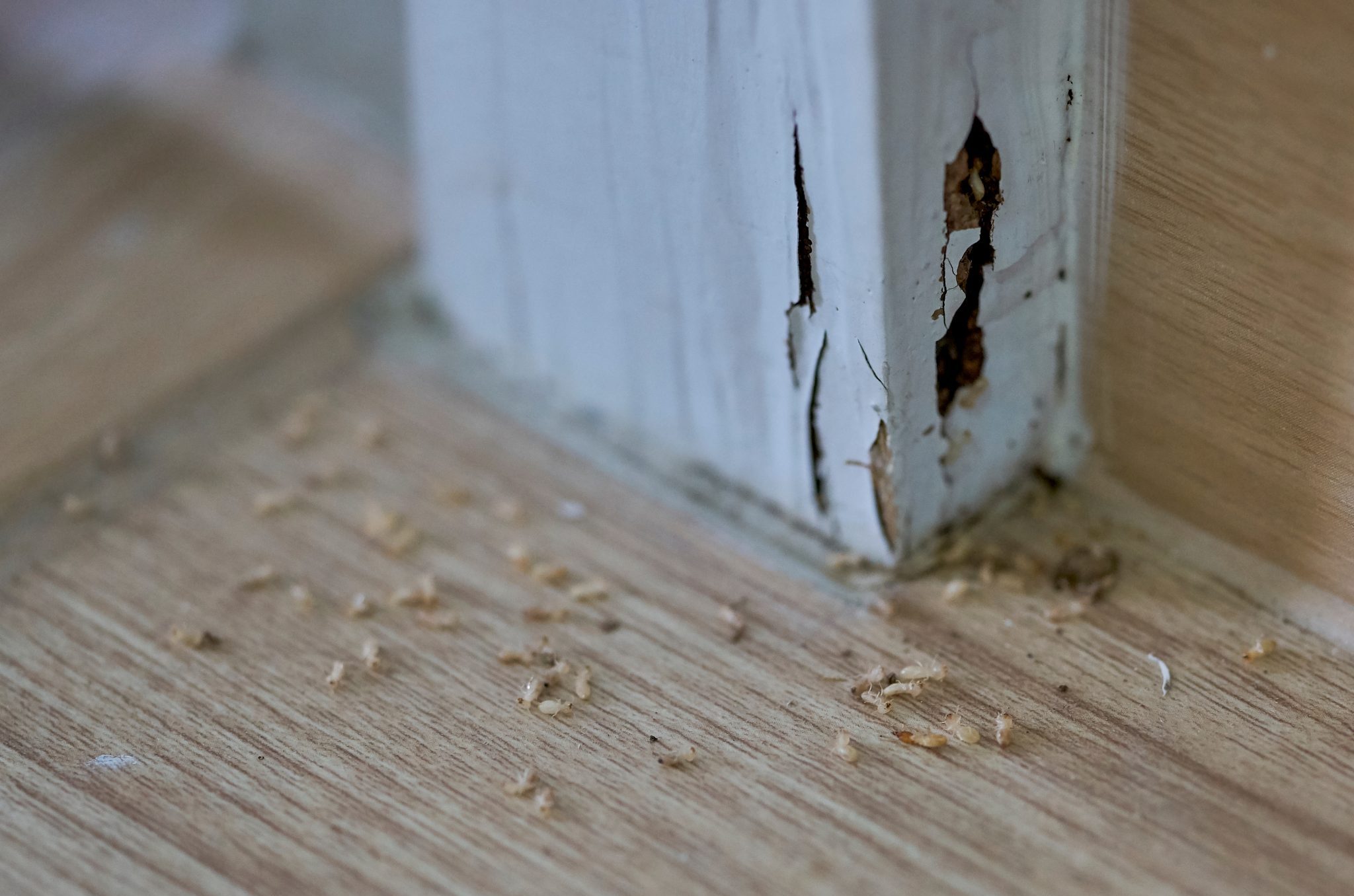
Plywood is a type of engineered wood, which is composed of several thin layers of wood veneer glued together. It is often used in construction, furniture making and DIY projects. Unfortunately, it can also be a food source for termites, depending on the type of wood used and the condition of the plywood.
Termites are attracted to plywood because of its high cellulose content. Cellulose is the main component of plant cell walls and is a very important source of food for termites. Softwoods such as pine, cedar and fir are especially attractive to termites because they contain more cellulose than hardwoods. Plywood made from softwoods is more likely to be attractive to termites than plywood made from hardwoods.
Termites can also be attracted to plywood that has been exposed to moisture or is in poor condition. Moisture provides a perfect environment for termites and if the plywood is already cracked, warped or rotting, it can provide an easy entry point for termites.
Here are some things you can do to prevent termites from attacking your plywood:
- Make sure your plywood is properly sealed, both on the surface and around any edges or joints.
- Store plywood in a dry place, away from any sources of moisture.
- Inspect plywood regularly for signs of damage, such as warping, cracking, or rotting.
- If you find any signs of damage, replace the damaged plywood immediately.
By taking these preventive measures, you can help keep your plywood safe from termites.
Does Plywood Provide Food Source for Termites?
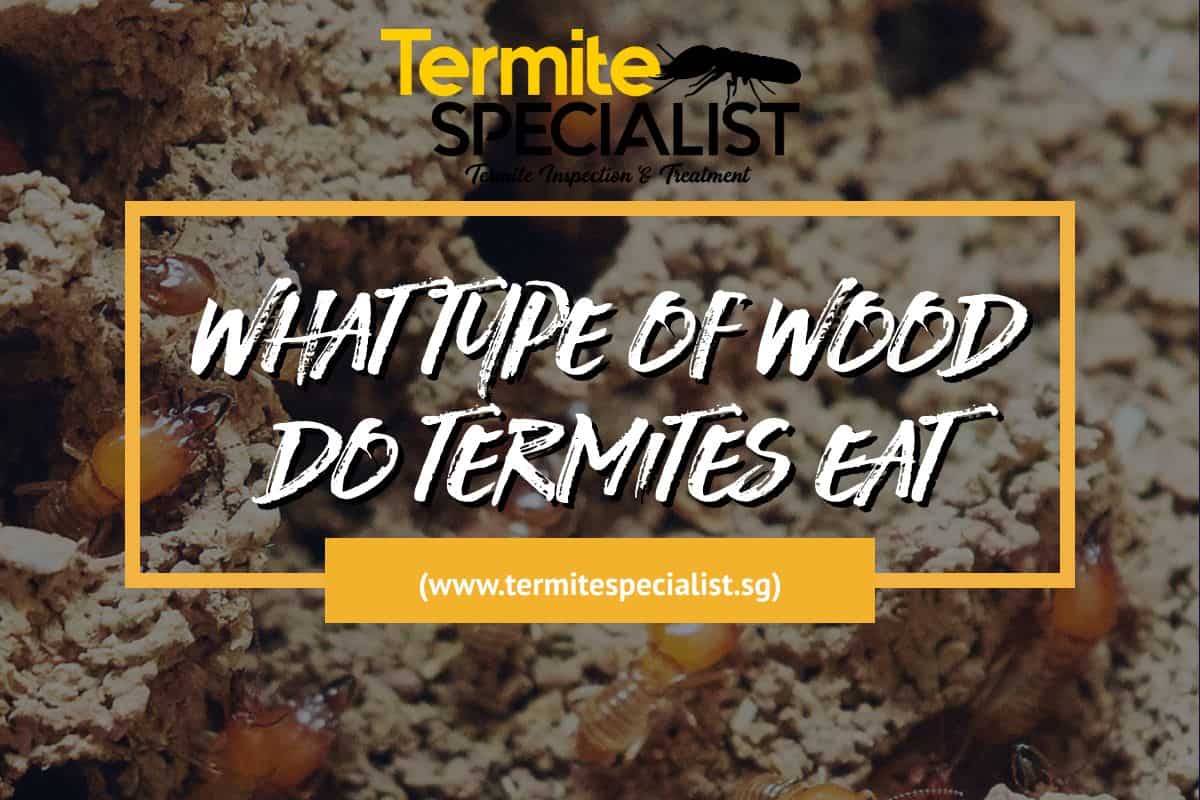
Plywood is a type of engineered wood, manufactured by gluing together several thin layers of wood veneer. It is a popular choice for construction and furniture due to its strength, durability and relative affordability. However, despite its popularity, plywood is not a suitable food source for termites.
Termites mainly feed on cellulose, which is found in wood, paper and plant material. Plywood does not contain enough cellulose to be a viable food source for termites. While the wood veneers used in the manufacture of plywood do contain cellulose, the glue and other components used in its construction create a barrier that prevents termites from accessing the cellulose.
| Material | Cellulose Content1 |
|---|---|
| Plywood | Low |
| Softwood | High |
| Hardwood | High |
1Cellulose content is measured in percentage of dry weight.
In comparison, softwood and hardwood have a much higher cellulose content and are therefore more appealing to termites. As a result, termites are more likely to feed on softwood and hardwood rather than plywood.
Overall, plywood is not a suitable food source for termites. The low cellulose content and the barrier created by the glue and other components used in its construction make it difficult for termites to access the cellulose and feed on it.
Are There Any Protective Measures to Avoid Termite Infestations?
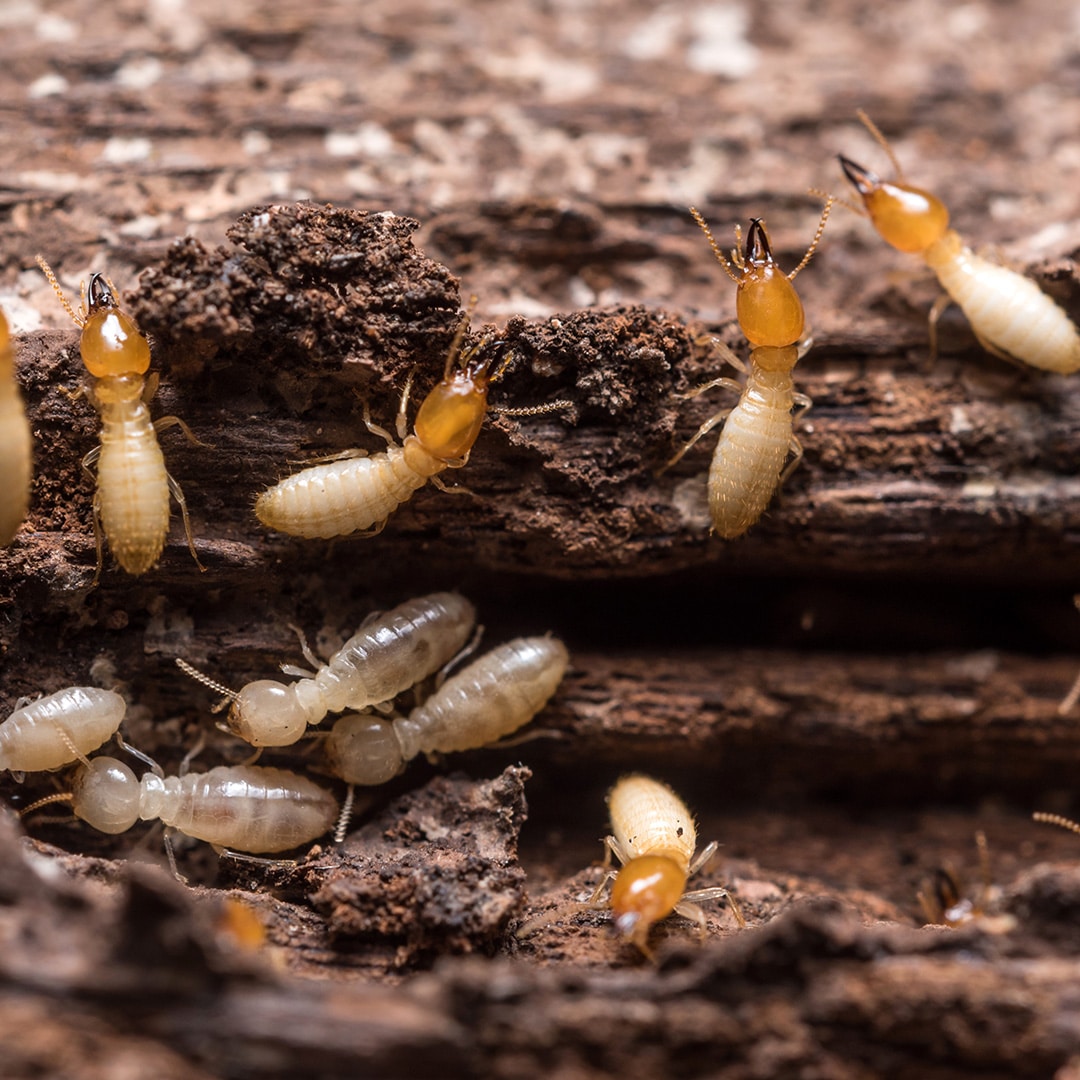
Termites are a pest that can cause significant damage to wooden structures. Plywood is particularly susceptible to termite attack, as its construction makes it easy for them to tunnel into the wood. To prevent termite infestations, it is important to take measures to protect your home and property.
One of the best ways to protect against termite infestations is to ensure that moisture is not allowed to accumulate around the plywood. Termites need moisture in order to survive, so keeping the area dry will make it difficult for them to survive. It is also important to inspect the plywood regularly to check for signs of infestation, such as tunnels or droppings.
Another way to help prevent termite infestation is to make sure all wood to ground contact is eliminated. This means that any wood that is in contact with the ground should be treated with a wood preservative or insecticide. This will help to prevent the termites from being able to access the wood.
Finally, it is important to seal any cracks or crevices around the plywood with caulk or foam. This will help to prevent termites from being able to access the wood from these areas.
By taking these measures, you can help to reduce the likelihood of a termite infestation in your home. With regular inspections and proper preventive measures, you can help to protect your plywood from damage caused by termites.
How to Identify Termite Damage to Plywood?
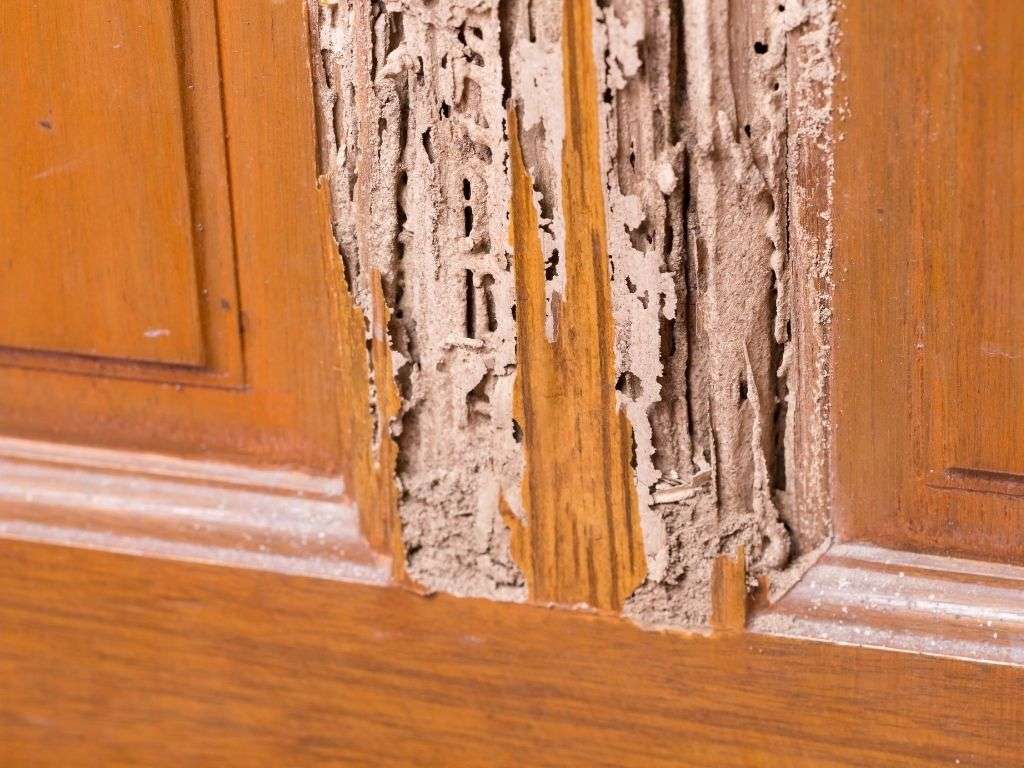
- Look for small holes in the surface of the plywood. Termites will frequently make small holes in the surface of the plywood in order to access the interior of the wood.
- Look for small piles of sawdust around the edges of the plywood. As termites chew their way through the wood, they will leave small piles of sawdust that can be visible around the edges of the plywood.
- Check for any signs of water damage. Termites will often cause water damage as they chew through the wood, which can be visible as discolored spots or patches on the surface of the plywood.
- Tap on the plywood to see if it sounds hollow. As termites chew away at the wood, they will hollow it out, which can be detected by tapping on the plywood to see if it sounds hollow.
- Check the surface of the plywood for any signs of buckling or warping. As termites eat away at the wood, they will cause the surface of the plywood to become warped or buckled.
If any of the above signs of damage are present, it is likely that the plywood has been damaged by termites. In order to ensure that the damage is not caused by another pest or environmental factor, it is important to have a professional inspect the plywood before taking any action.
What to Do if Termites Infest Plywood?
| Step | Action |
|---|---|
| 1 | Identify the termites. Winged termites, often referred to as swarmers, indicate an active infestation. If you see swarmers, check for the presence of mud tubes, which are tunnels the termites construct to move between their colony and the wood. |
| 2 | Contact a pest control professional. Termites can cause significant damage to your home and can be tough to eliminate. It’s best to contact a professional to determine the extent of the infestation and to determine the best way to get rid of the termites. |
| 3 | Remove the infected plywood. Plywood that has been infested by termites should be removed and discarded immediately to prevent further infestation. |
| 4 | Replace the plywood. Once the infected plywood has been discarded, it’s important to replace it with new, treated plywood. This will help to ensure that the infestation doesn’t spread to other areas of your home. |
| 5 | Treat the area around the plywood. Termites can travel through the soil to other areas of your home, so it’s important to treat the area around the plywood with a pesticide or other form of termite control. |
Termites can cause significant damage to plywood, so it’s important to take action as soon as an infestation is identified. By following the steps outlined above, you can help ensure that the infestation is effectively eliminated and that your home is protected from further damage.
Do Other Wood-Eating Insects Infest Plywood?
Yes, other wood-eating insects can infest plywood. Common wood-eating insects include carpenter ants, powderpost beetles, old house borers, and furniture beetles. These insects can damage plywood by eating the exposed surfaces, leaving behind holes, tunnels, and sawdust.
| Insect | Damage |
|---|---|
| Carpenter Ants | Eats exposed surfaces, leaving behind holes and tunnels |
| Powderpost Beetles | Eats the exposed surfaces, leaving behind holes and powdery sawdust |
| Old House Borers | Eats exposed surfaces, leaving behind holes and tunnels |
| Furniture Beetles | Eats exposed surfaces, leaving behind holes and sawdust |
These insects can cause extensive damage to plywood over time, so it is important to inspect plywood regularly in order to identify any signs of infestation. Should any signs of infestation be observed, it is recommended to contact a pest control expert to address the issue.
Frequently Asked Questions
What are the dangers of plywood to a home from termites?
Plywood is susceptible to damage from termites due to its cellulose content. Termites can consume the wooden layers of plywood, weakening its structural integrity. If left untreated, plywood infested with termites can lead to costly structural damage and repairs. Additionally, termites can cause damage to the interior of the home by eating through walls and other wooden structures, posing a safety hazard. Therefore, it is important to inspect plywood regularly and take preventive measures to protect it from termite infestations.
What Types of Wood are Susceptible to Termite Infestations?
Softwoods such as pine and Douglas fir, as well as hardwoods such as oak and maple, are all susceptible to termite infestations. Plywood, which is made from layers of compressed softwood, is also susceptible. Termites are attracted to wood that is moist and decayed, so any wood that is exposed to moisture or water-damaged may be more vulnerable to termite infestations.
Are particle board, MDF, and OSB common targets for termites?
Yes, termites feed on a variety of wood and wood-based products, including particle board, MDF (medium-density fiberboard) and OSB (oriented strand board). These materials are often used in furniture and construction projects and can attract termites due to their cellulose content. Termites can enter a structure through holes or cracks in the foundation and then feed on the wood-based materials. To prevent termites from damaging your home, it is important to inspect and repair any potential entry points.
What methods can be used to protect plywood from termites?
Treating plywood with a chemical insecticide, such as permethrin, bifenthrin, or cypermethrin is an effective way to protect it from termites. These insecticides can be applied as a spray or foam, and can provide up to five years of protection. Additionally, sealing plywood with paint or varnish can create a protective barrier against termite infestations. Finally, using pressure-treated plywood is another way to ensure that the wood is resistant to termites.
How do you identify a termite infestation in plywood?
Termites can cause significant damage to plywood, which is why it is important to identify any signs of an infestation. Look out for small, pin-sized holes in the wood, which are a sign of termite activity. Discoloration of the wood is another indication that termites may be present. You should also keep an eye out for mud tubes, which are tunnels constructed by termites as they travel between their nest and the wood. Finally, if you tap on the wood and it sounds hollow, it may indicate that the inner layers of the plywood have been eaten away by termites.
Conclusion
Termites are a major threat to homeowners because of their ability to damage wooden structures. Plywood is an especially vulnerable material because termites can easily feed on its soft inner layers. While some types of plywood are treated to be more resistant to termites, any wood material is still susceptible to termite damage. Homeowners should take precautions to prevent a termite infestation by maintaining proper moisture levels in their homes, inspecting for signs of termite activity, and using termite-resistant materials in construction.

